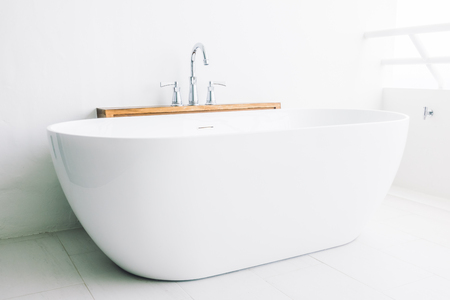Understanding Feng Shui Principles in Modern British Homes
Feng Shui, an ancient Chinese philosophy centred on harmonising individuals with their surrounding environment, has become increasingly relevant in the context of modern British homes—particularly as homeowners seek to create spaces that not only look appealing but also promote wellbeing. At its core, Feng Shui focuses on the flow of energy, or “Qi,” and how the five elements—wood, fire, earth, metal, and water—interact within a space. In Britain’s contemporary architectural landscape, which often features loft conversions and en suite bathrooms, these principles can be thoughtfully applied to enhance both comfort and balance.
Modern British architecture is characterised by its blend of tradition and innovation: Victorian terraces coexist with minimalist new builds, and loft spaces are frequently repurposed into functional living areas such as bedrooms or private bathrooms. These adaptations present unique challenges and opportunities for integrating Feng Shui. For instance, the placement of water elements like baths, showers, and sinks in upper-level lofts or en suites directly influences the movement of Qi throughout a home. A careful approach is required to ensure these features do not disrupt the natural energy flow that supports health and prosperity.
The British lifestyle further shapes how Feng Shui is interpreted today. With increasing emphasis on personal space, privacy, and multi-functional rooms, understanding how traditional principles relate to current habits is key. Whether dealing with the compactness of urban flats or the openness of rural properties, applying Feng Shui concepts allows homeowners to navigate modern demands without losing sight of harmony and positive energy. As we explore how to manage water elements specifically in loft bathrooms and en suites, it becomes clear that a nuanced understanding of both cultural heritage and contemporary living is essential for achieving balance in the home.
2. The Challenges of Water Elements in Loft Bathrooms and En Suites
Loft bathrooms and en suites in UK homes present a unique set of challenges regarding water elements, both from a Feng Shui perspective and in practical everyday life. The placement and management of water features such as sinks, toilets, showers, and baths in loft spaces often differ significantly from those in standard bathrooms due to structural constraints and architectural limitations. In Feng Shui, water represents wealth, flow, and emotional balance; however, improper positioning can lead to energetic imbalances or even negative associations such as financial loss or health issues.
Typical Water Features in Loft Bathrooms
| Feature | Description | Common Loft Placement |
|---|---|---|
| Shower/Bath | Primary source of moving water; symbolises cleansing and renewal | Often situated under sloped ceilings or in alcoves due to limited headroom |
| Toilet | Represents waste elimination; potentially problematic if located near sleeping areas | Usually tucked into corners to maximise space efficiency |
| Basin/Sink | Facilitates daily routines; associated with flow and communication | Typically found along the only available straight wall for plumbing access |
| Radiators/Heated Towel Rails | Introduce heat to offset moisture; important for preventing dampness | Installed wherever wall space permits, sometimes close to doors or windows |
The Symbolic Significance in Feng Shui Context
According to Feng Shui principles, the way water elements are integrated into a living space can have substantial effects on energy flow (Qi). In loft conversions where bathrooms are added as an afterthought, water fixtures may end up above key living spaces like bedrooms or kitchens below. This arrangement is traditionally discouraged in classical Feng Shui because it symbolises “water over fire,” potentially suppressing vitality or prosperity for the occupants beneath.
Practical Impact in UK Homes
From a practical standpoint, the UK’s older housing stock often means that loft bathrooms must contend with irregular ceiling heights, awkward plumbing runs, and potential insulation issues. These factors can result in condensation problems, poor ventilation, and increased maintenance needs—concerns that not only challenge comfort but also influence the perceived harmony and well-being promoted by good Feng Shui. Moreover, British weather exacerbates humidity and damp risks, making careful design and regular upkeep essential.
Summary Table: Feng Shui vs Practical Considerations in Loft Bathrooms
| Aspect | Feng Shui Concern | UK Homeowner Concern |
|---|---|---|
| Water Fixture Location | Avoid above beds/kitchens; maintain energy balance | Avoid leaks/drips onto lower floors; ensure easy maintenance access |
| Ventilation & Damp Control | Promote fresh Qi circulation; prevent stagnant energy | Avoid mould growth; protect building structure from moisture damage |
| Aesthetic Integration | Create harmonious layouts for positive flow of Qi | Maximise limited space while keeping visual appeal high for resale value or comfort |
| Plumbing Layouts | Smooth water flow without sharp angles or blockages (to avoid “cutting Qi”) | Simplify pipework to reduce risk of future leaks or costly repairs |
In summary, managing water elements in loft bathrooms and en suites requires balancing symbolic considerations from Feng Shui with the practical realities of UK architecture. By understanding both perspectives, homeowners can create spaces that are both energetically supportive and functionally sound.

3. Optimising Water Flow and Drainage for Positive Energy
Effective management of water elements is essential when designing loft bathrooms and en suites, particularly in the context of Feng Shui principles. In the often limited and irregularly shaped spaces typical of UK loft conversions, ensuring smooth water flow and proper drainage can directly impact both practical functionality and the circulation of Qi, or positive energy, throughout your home.
Understanding the Importance of Water Movement
In Feng Shui, water represents wealth, clarity, and fluidity. Stagnant or poorly directed water in a bathroom can lead to trapped energy, manifesting as dampness, odours, or leaks—issues that are not only unpleasant but may symbolically disrupt prosperity and well-being. In lofts, where gravity-assisted drainage is less straightforward due to their location above the main plumbing stack, careful planning is required to avoid slow drains or backflow.
Strategies for Loft Bathroom Plumbing
To optimise both Qi and everyday convenience, consider these practical steps:
- Efficient Pipe Routing: Position bathrooms as close as possible to existing soil stacks or vertical plumbing runs. This minimises complex pipework and reduces the risk of blockages.
- Professional Gradient Management: Ensure all waste pipes have the correct fall (typically 18-22mm per metre) to encourage swift drainage and prevent standing water—a key factor in maintaining harmonious energy.
- Quality Materials: Use high-grade fittings and leak-proof joints. Substandard materials can lead to drips and seepage over time, disrupting both Feng Shui balance and structural integrity.
Enhancing Well-being through Subtle Adjustments
Beyond technical installation, small details can further promote positive energy flow: fit soft-close lids on toilet seats to prevent abrupt noise disruptions; introduce natural ventilation or discreet extractor fans to keep air fresh and moisture levels low; and consider concealed cisterns or wall-mounted fixtures for a decluttered feel that allows Qi to circulate freely. These adaptations are not only in line with British preferences for tidy, efficient design but also help create a tranquil retreat within your loft space.
4. Cultural Adaptation: British Design Meets Feng Shui Tradition
Integrating Feng Shui principles into loft bathrooms and en suites within the context of classic British interiors requires both creative adaptation and cultural sensitivity. British homes, particularly loft conversions, are known for their distinctive features such as skylights, exposed wooden beams, sloped ceilings, and maximised use of compact spaces. These elements can pose both challenges and opportunities when harmonising water elements according to Feng Shui guidance.
Blending British Features with Feng Shui Principles
When adapting Feng Shui to a British loft bathroom or en suite, consider the following core design aspects:
| British Interior Feature | Feng Shui Guidance | Practical Integration |
|---|---|---|
| Skylights | Ensure balanced light and avoid excessive yang energy above water fixtures. | Add blinds or frosted glass to soften harsh daylight, creating a calm atmosphere. |
| Exposed Beams | Avoid beams directly over beds or bathtubs to prevent oppressive chi. | Use soft finishes or plants to visually soften the beam’s effect in the space. |
| Compact Layouts | Maintain clear pathways and uncluttered arrangements for smooth energy flow. | Select space-saving fixtures; opt for wall-mounted storage to maximise openness. |
| Sloped Ceilings | Avoid sharp angles pointing toward water sources to reduce disruptive energy. | Position baths or sinks away from low slopes; use mirrors to reflect light and chi upward. |
The Importance of Local Materials and Colour Palettes
Classic British interiors often embrace natural materials—like stone tiles or oak floors—and neutral colour palettes. In Feng Shui, these elements can be harnessed to support the Water element without overwhelming it:
- Natural Stone: Supports grounding Earth energy while providing a stable base for water fixtures.
- Pale Blues and Greys: Enhance the Water element subtly without making the space feel cold or sterile.
- Sustainable Wood: Balances excess moisture by introducing gentle Wood energy, essential in humid UK climates.
Case Example: A Harmonious Loft En Suite
A North London attic conversion with exposed beams, a compact layout, and a large skylight demonstrates effective cultural adaptation. The design incorporates a freestanding bathtub positioned away from the lowest part of the ceiling, soft linen blinds under the skylight, pale blue ceramic tiles on walls (representing Water), and oak shelving for warmth (introducing Wood). This blend respects both the architectural heritage of a British home and core Feng Shui traditions for water management.
5. Common Mistakes and How to Avoid Them
When designing loft bathrooms and en suites in the UK, it’s easy to overlook key Feng Shui principles, especially given the unique challenges of British architecture. Below, we analyse frequent errors homeowners make and offer practical solutions tailored to local contexts.
Ignoring the Impact of Sloped Ceilings
Loft conversions typically involve sloped or irregular ceilings. In Feng Shui, oppressive overhead beams or low angles can create uncomfortable “pressure” energy (Sha Qi), which may affect wellbeing. To mitigate this, avoid placing the bath or shower directly beneath the lowest point of the ceiling. Instead, position fixtures where ceiling height is maximised, and use soft lighting and reflective surfaces to counteract any oppressive sensation.
Poor Water Flow Management
A common error is inadequate planning for water flow, both physically and energetically. In Feng Shui, uncontrolled water represents lost wealth and vitality. British homes often feature complex plumbing in loft spaces, leading to leaks or persistent dampness. Ensure all pipes are properly insulated and concealed. Regularly check for drips or condensation—these not only damage property but also disrupt harmonious energy flow.
Overlooking Door Placement
Many UK loft bathrooms have doors facing beds or directly aligned with stairways due to space constraints. This arrangement is discouraged in Feng Shui as it can allow negative energy to rush into restful areas. Where possible, offset doors from direct alignment with beds or stairs using partitions, frosted glass, or subtle plant arrangements to diffuse energetic flow.
Lack of Ventilation
British weather often leads homeowners to prioritise insulation over ventilation. However, stagnant air and lingering moisture are detrimental in Feng Shui terms. Install extractor fans and consider roof windows (Velux) that can be opened regularly, allowing fresh Chi to circulate while preventing mould growth.
Excessive Use of Cool Colours
It’s tempting to choose blue or grey palettes for a crisp bathroom look, but an overload of cool tones can suppress warmth and comfort—key components of positive Feng Shui. Balance these with wood accents, houseplants suited for low-light British interiors, or warm lighting to introduce a cosier atmosphere.
Neglecting Personalisation
Lastly, many Britons adopt a minimalist approach that feels sterile rather than tranquil. Incorporate meaningful items—artwork, small decorative pieces with sentimental value, or traditional British ceramics—to invite personal Chi into the space without cluttering it.
By understanding these common mistakes and applying context-appropriate remedies, UK homeowners can create loft bathrooms that not only function well but also support holistic wellbeing through mindful Feng Shui practice.
6. Practical Tips for Harmonising Water Elements in Loft Spaces
For British households looking to strike the right balance of water elements within loft bathrooms and en suites, small but thoughtful adjustments can make a meaningful difference. Here are some straightforward recommendations tailored for UK homes:
Choose Calming Colours and Materials
Opt for gentle blues, greens or off-whites on walls and soft furnishings to evoke tranquillity without overwhelming the compact loft environment. Natural materials like slate, stone or wood can also provide grounding energy, counteracting excessive wateriness.
Enhance Ventilation and Light
Proper airflow is essential in preventing stagnant water energy. Install extractor fans or openable roof windows (Velux-style) to keep the space fresh and free from dampness—a common challenge in British loft conversions. Incorporate mirrors strategically to reflect light without directly facing the toilet or shower, as this may disperse beneficial energy.
Mindful Placement of Fixtures
Avoid placing toilets or showers directly above sleeping areas below, as per Feng Shui principles. Where possible, position bathroom doors so they do not align directly with beds or main living spaces underneath, thereby maintaining energetic separation between rest and cleansing zones.
Balance with Earth Elements
Introduce earth-toned accessories—such as ceramics, terracotta plant pots, or textured bath mats—to stabilise water’s fluid nature. Houseplants like peace lilies or ferns thrive in humid conditions and naturally purify air while reinforcing the link between nature and wellbeing in urban British settings.
Keep Clutter at Bay
Regularly tidy personal care products and towels; clutter can obstruct positive energy flow. Integrated storage solutions, like under-sink cabinets or built-in shelves within eaves, maximise space while preserving visual calm.
Sustain with Regular Maintenance
Promptly address drips, leaks or persistent condensation—these not only waste resources but also symbolise loss of wealth and harmony in Feng Shui. A well-cared-for loft bathroom radiates comfort and positivity throughout the home.
By applying these practical tips, British homeowners can enjoy loft bathrooms and en suites that are both functional and energetically balanced, supporting everyday wellbeing in line with modern Feng Shui wisdom.


